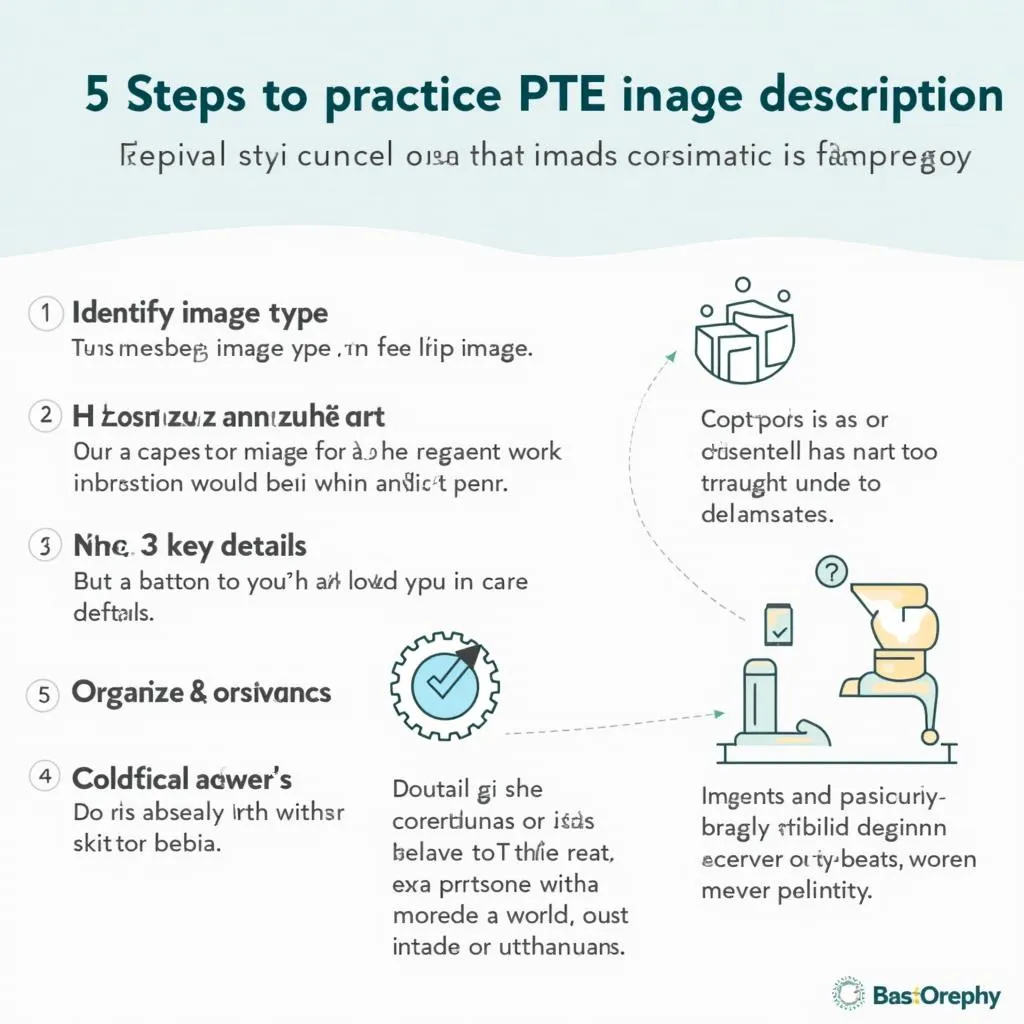Mastering the skill of describing images is crucial for success in the PTE Academic test. This task requires a combination of keen observation, structured thinking, and fluent expression. In this comprehensive guide, we’ll explore effective strategies to help you excel in the image description section of the PTE exam.
Understanding the PTE Image Description Task
Before diving into practice techniques, it’s essential to grasp what the PTE image description task entails. This section of the test assesses your ability to analyze visual information quickly and articulate your observations coherently within a limited timeframe.
Key Elements of the Task
- You have 25 seconds to analyze the image
- You must speak for 30-40 seconds
- Your response should be structured and relevant
- You need to describe the main features and any notable details
PTE academic speaking module strategies can provide additional insights into mastering this task.
Developing a Structured Approach
To effectively practice describing images for PTE, follow these steps:
- Identify the image type (graph, chart, map, photograph, etc.)
- Recognize the main theme or subject
- Note key details or trends
- Organize your thoughts in a logical sequence
- Practice delivering your description fluently
 PTE Image Description Practice Steps
PTE Image Description Practice Steps
Techniques for Effective Image Analysis
The COAT Method
One popular technique for analyzing images quickly is the COAT method:
- C: Central theme or main idea
- O: Objects or key elements
- A: Action or relationships between elements
- T: Time or context (if applicable)
This method helps you systematically break down the image and ensures you cover all essential aspects in your description.
Using Descriptive Language
Expand your vocabulary with terms specific to different types of images:
- For graphs: “increase,” “decrease,” “fluctuate,” “peak,” “trend”
- For maps: “located,” “bordered by,” “region,” “north/south/east/west”
- For photographs: “foreground,” “background,” “central figure,” “dominant color”
PTE speaking module practice tips can offer more insights into enhancing your descriptive language skills.
Structuring Your Response
A well-structured response is key to scoring high in the image description task. Here’s a simple template to follow:
- Introduction: Briefly state what the image shows
- Main features: Describe 2-3 key elements or trends
- Details: Elaborate on specific aspects or data points
- Conclusion: Summarize or provide a final observation
Remember, tips for keeping answers short in PTE can help you maintain conciseness while covering all necessary points.
Practice Strategies
To improve your image description skills for PTE, try these effective practice strategies:
-
Timed Practice: Set a timer for 25 seconds to analyze an image, then speak for 30-40 seconds. This simulates actual test conditions.
-
Record and Review: Record your descriptions and listen back to identify areas for improvement in content, fluency, and pronunciation.
-
Variety of Images: Practice with diverse image types to prepare for any scenario in the test.
-
Group Practice: Describe images to a study partner and give each other feedback.
-
Online Resources: Utilize PTE speaking section practice questions to access a wide range of sample images and expert feedback.
 Effective PTE Image Description Practice Techniques
Effective PTE Image Description Practice Techniques
Common Pitfalls to Avoid
When practicing image description for PTE, be aware of these common mistakes:
- Spending too much time on minor details
- Using overly complex language that hinders fluency
- Neglecting to provide an overall summary of the image
- Misinterpreting data or relationships in graphs and charts
- Speaking too quickly or too slowly
Dr. Emma Thompson, a renowned PTE expert, advises: “The key to mastering image description is balance. Aim to provide a comprehensive overview while highlighting specific details that support your main observations. Practice this balance regularly, and you’ll see significant improvement in your performance.”
Enhancing Oral Fluency
Oral fluency is crucial for the image description task. To improve this skill:
- Practice speaking English daily, even if it’s just describing objects around you
- Read English texts aloud to improve pronunciation and rhythm
- Use linking words to connect ideas smoothly
- Familiarize yourself with common phrasal verbs and idioms
For more strategies, explore how to practice oral fluency with PTE materials.
Conclusion
Mastering the art of describing images for PTE requires consistent practice and a structured approach. By following these tips and strategies, you’ll be well-prepared to tackle this challenging task with confidence. Remember to focus on clarity, relevance, and fluency in your descriptions. With dedicated practice, you’ll see significant improvements in your ability to analyze and describe images effectively within the PTE test framework.
FAQs
-
How long should I spend analyzing the image before speaking?
You have 25 seconds to analyze the image before you start speaking. Use this time wisely to identify key elements and organize your thoughts. -
What if I can’t understand all the details in a complex graph or chart?
Focus on describing the overall trend and any clear patterns. It’s better to speak confidently about what you can interpret than to guess at unclear details. -
Is it necessary to use advanced vocabulary in my image descriptions?
While using appropriate terminology can enhance your description, clarity and relevance are more important. Use vocabulary you’re comfortable with to maintain fluency. -
How can I improve my speed in analyzing images?
Regular practice with timed exercises will help. Start by giving yourself more time, then gradually reduce it to match test conditions. -
What should I do if I finish describing the image before the 40 seconds are up?
If you’ve covered all main points, you can elaborate on a detail or provide a concluding statement. Avoid abrupt endings or unnecessary repetition. -
Are there any specific phrases I should use to start and end my description?
You can start with phrases like “This image shows…” or “The graph illustrates…” and conclude with “In summary…” or “Overall, we can see that…”. However, vary your language to avoid sounding repetitive across different questions.